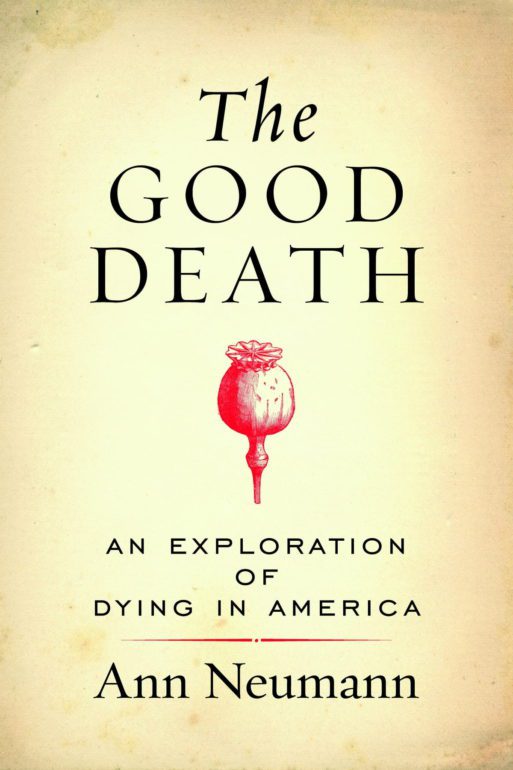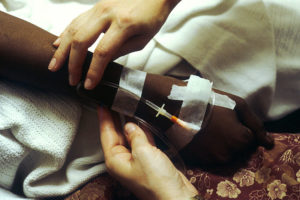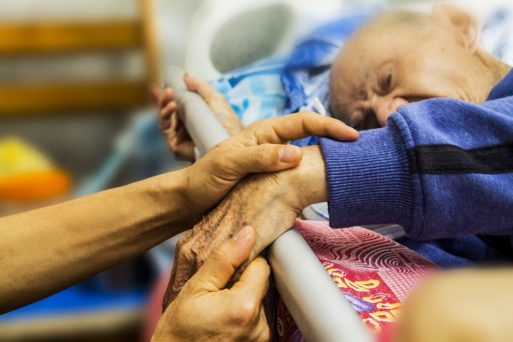 After Ann Neumann’s father died following a long illness, she felt lost. For more than a year, she traveled from city to city across the globe looking to fill the massive crater that her father’s death left. When she returned to the United States, she still felt as though a piece of her was missing. That’s when she became a hospice volunteer.
After Ann Neumann’s father died following a long illness, she felt lost. For more than a year, she traveled from city to city across the globe looking to fill the massive crater that her father’s death left. When she returned to the United States, she still felt as though a piece of her was missing. That’s when she became a hospice volunteer.
Neumann’s first book, “The Good Death,” follows her journeys through the hospice system and confronts head-on our society’s poor understanding of death. She uses personal stories about her hospice clients as springboards for larger discussions about laws, attitudes and progress in end-of-life care. Although the book is less than 300 pages long, it feels like an encyclopedic view of America’s death denial. Neumann packs every sentence with detailed information, such as when and why hospice began, statistics on causes of death, and recent news stories about the issues discussed. It’s so detailed, in fact, that I don’t recommend reading this book in one sitting. It’s best taken in slowly, chapter by chapter, so that the information sinks in.
Neumann covers a lot of ground in “The Good Death.” Yet each of her stories contributes to the reader’s understanding of her basic premise. America doesn’t handle death well. For all of our medical advances and increased life expectancy, our doctors and even our hospice volunteers often fail their patients when it’s time to admit that death is near. American culture is so focused on lifesaving technology that we forget that death is inevitable, or that making the conscious decision to die can be a noble choice. This is especially true when the alternative is undergoing painful and invasive medical procedures.

Credit: Wikimedia.org
One of the strongest chapters in the book focuses on Death with Dignity laws across the United States. Neumann interviews a lawyer who worked with Robert Baxter, a Montana man who, at 75, decided that he wanted to end his life. Baxter had an aggressive form of leukemia, and rounds of chemotherapy had taken a serious toll on his quality of life. So Baxter took his case to the Montana Supreme Court. He asked the state to consider a Death with Dignity law similar to the one in Oregon. It would allow physicians to prescribe medications that would end a patient’s life at the patient’s explicit request. The Court decided in Baxter’s favor. Montana is now one of five states that allows physician-assisted death.
As with the other issues laid out in this book, Neumann uses Baxter’s story as a cornerstone for discussions about what it means to consciously decide to die. In most states, physician-assisted death is still illegal. This means that some patients actually choose to starve themselves in order to die on their own terms. Neumann’s book asks us to think about this question. Which is more humane — a physician aiding a patient in dying painlessly and quickly, or a patient slowing killing themselves by refusing to eat or drink?
This is just one of many complex topics Neumann covers, and they all lead back to the same point. American culture emphasizes a lust for life, and we rarely consider death. “Death is something that happens to other people,” we think. And if we just try harder to find cures for the diseases that kill us, we’ll rid ourselves of death. Obviously, this view isn’t logical or realistic. In “The Good Death,” Nuemann does her best to explain why it needs to change.

Credit: Pixabay.com
Ann Neumann knows better than most what it is like to confront death. She’s seen many people she cares deeply about die. As she continues her hospice volunteer work, she’ll inevitably see more. She knows exactly how painful it is to lose someone you care about. Yet she also knows how draining it is for patients to continue a fight that they know they will soon lose. As a society, we need to find a balance between the fight for life and an acceptance of death.
The first step to a “good death” is acknowledging that every one of us will die someday. Of course, most of us want to postpone that moment as long as possible. And for the most part, that makes good sense. But when postponing death means suffering through the last few months of life, it may be time to reassess what it means to be truly alive.

 “The Good Death” by Ann Neumann
“The Good Death” by Ann Neumann


 John Mulaney’s “Funeral Planning” on Netflix: No Real Plan
John Mulaney’s “Funeral Planning” on Netflix: No Real Plan

 Composting Bodies Is Now Legal in a Dozen States
Composting Bodies Is Now Legal in a Dozen States














